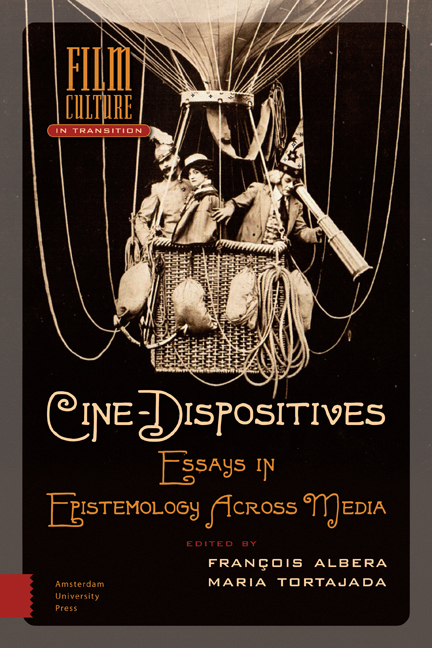Marey and the Synthesis of Movement: The Reconstruction of a Concept
Published online by Cambridge University Press: 10 February 2021
Summary
“Cinema is the moving image”: the idea, which has become a commonplace, coalesced around 1900 as photography was being referred to as the still image. The opposition between photography and cinema made it possible throughout the twentieth century, and to this day, to assign distinct tasks in the representation of reality to each of these emblematic dispositives of modernity. Still, the association still/moving also structured the cinematographic dispositive as such as early as the late nineteenth century. Indeed, photography was not the other of cinema at the time, but a means used by “cinema” in its chronophotographic stage to reconstitute movement: the moving image was the result of a preliminary decomposition of the movement of a moving object or body into a series of instantaneous photographs. Chronophotography – most particularly in its scientific inception, which Etienne-Jules Marey contributed through his work – established the regularity of intervals between frames as the condition of possibility for the synthesis of movement. This technical characteristic revealed two visions of cinema throughout the twentieth century: on the one hand, the insistence on the centrality of the film frame, scansion, decomposition; on the other hand, the idea of a cinema wholly defined by the continuous flow of movement whose projection produces the illusion or reconstitution. Roland Barthes, an advocate of the film frame, may in that respect be opposed to André Bazin, who structured his “ontology of cinema” through the division between the two media along the question of the reproduction of movement, precisely. Gilles Deleuze also emphasized the continuous flow with what he called the “movement-image,” that is, the expression of Bergsonian duration in its capacity for change. While the apology of continuity was dominant in the film production as well as the theorization of film of the second half of the twentieth century, the idea of cinema still remained structured by the new, underlying opposition between synthesis and decomposition – irreducibly so, it seemed. The synthesized image was thus conceived through the repression of the part played by the film frame in decomposition or the explanation of its own construction as image: either way, this synthesized image was indebted to the film frame and was opposed to it. However, the discontinuity inherent in cinema was not always limited to the series of film frames.
- Type
- Chapter
- Information
- Cine-DispositivesEssays in Epistemology Across Media, pp. 93 - 114Publisher: Amsterdam University PressPrint publication year: 2015

